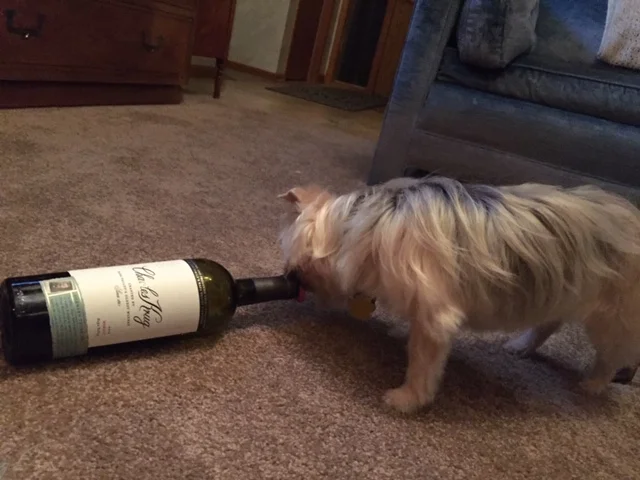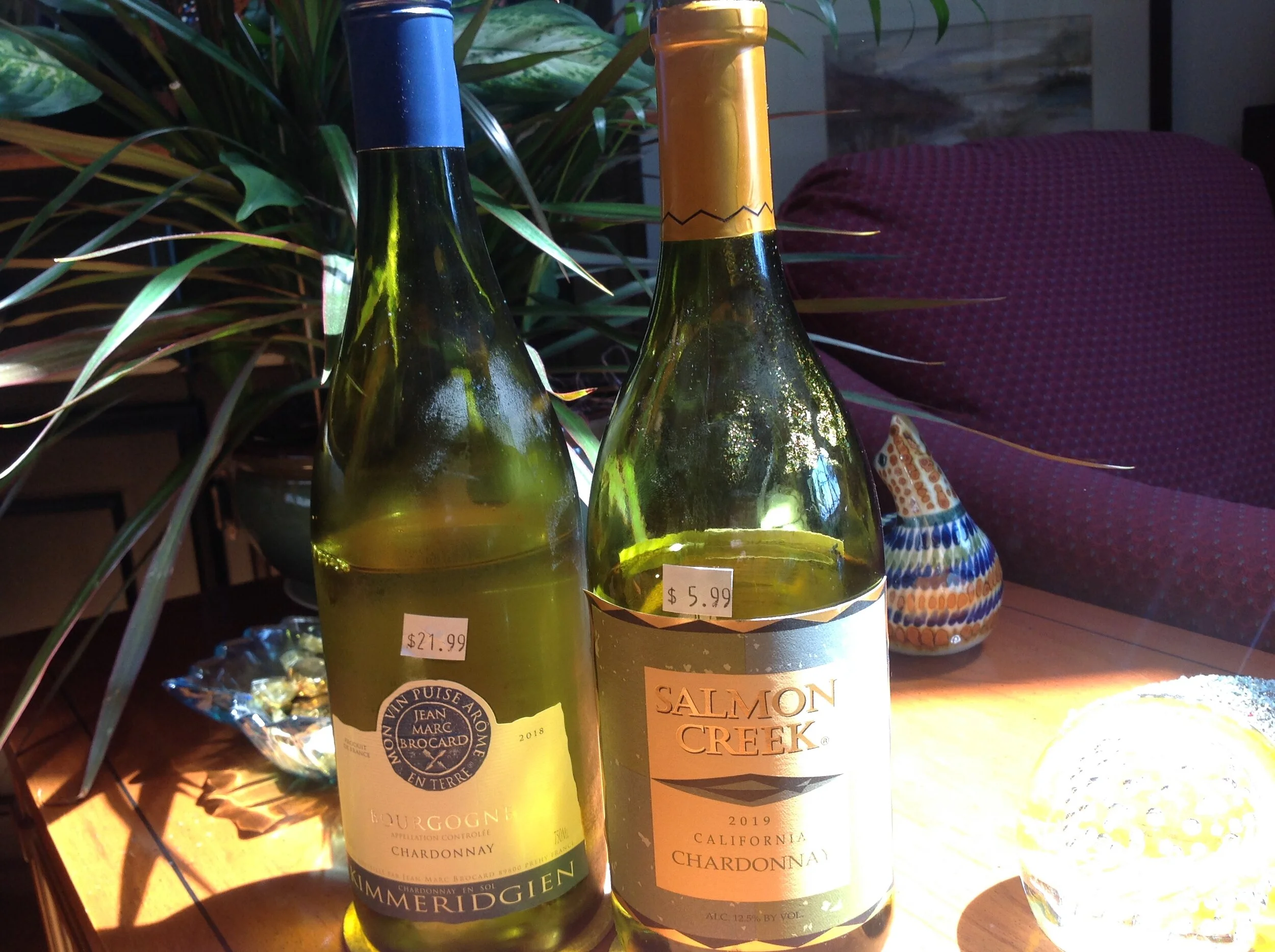Vinifera, Hybrids or Native Grapes? Rude Tasters Dive into, "What Makes a Good Wine?"

I recently purchased a case of wine from Castillo y Leon in Spain that tasted to me like a Michigan Hybrid grape wine. It really started to gnaw at my brain asking the question whether good wine can be made with species other than Vinifera or if the determining factor has more to do with location and wine style.
As this question kept swirling in my head I started to imagine a tasting where it might be possible to judge various species of grape without prejudice of anticipated quality. That is, if one can clearly taste that a wine is, let’s say Bordeaux or Napa Valley, one tends to automatically take for granted that it is a fine wine. If it has any redeeming qualities, it might be considered a great wine. By the same sort of prejudice, if one tastes a wine from Michigan and it is really quite exquisite, the comment might be, “considering where it was grown, it is okay.” Likewise, a very good Hybrid or Native wine from the Midwest probably has another strike against it. “I’m amazed that a wine made from garbage grapes in a region where it is impossible to make good wine could be drinkable” might be a typical reaction. Rude Tasters is a good laboratory for exploring these kinds of questions because everyone drinks a fair amount of wine daily, everyone has been doing so for many many years and has enormous experience with all kinds of wines, and most importantly, the tastings are always double blind. No one other than the host knows which wines are being tasted and even the host may not know the exact order in which they are poured.
So, I set out to come up with a wine tasting of grapes that everyone would agree are capable of making great wines, but, not from regions with which anyone was familiar. That is, all of the Vinifera wines hailed from regions that probably no one in the group had ever experienced. And, vice versa, each of the Hybrid and Native wines were grown and produced in the regions that were most likely to make good wine from these varietals. Ideally, by doing this, I might have erased prejudice and could rely on very experienced tasters to simply taste the wine and evaluate quality and drinkability.
Another factor that I felt was important was age. It is my opinion that the older the wine gets, the more difficult it is to have any sense of grape variety or origin when tasting it. At some point, when a wine is mature, the main attribute one tastes is how well it was made and the quality inherent in the grapes. Dr. Ed Cox also felt screw cap vs cork could be another variable.
So, to throw everyone off and not give away anything we started with a couple of warm-ups that I was certain presented a new experience for all.
Warm Up Wines
A. 2020 Bloomer Creek Vineyard “Pet-Nat” Skin Fermented Gewurztraminer, Finger Lakes NY (12% abv) $22 VINIFERA is my first experience with Pet-Nat (Pètillant-Natural). Prior to the tasting, I noticed that there was quite a bit of sediment on the bottom of the bottle and contacted the winemaker to ask if I should disgorge the bottle before pouring it. He assured me that the sediment would instantly mix with the wine as soon as the cap was removed and that was the way he and his customers liked it. However, being naturally pètillant, there was no telling how much sparkle there might be so he suggested openging it over a sink. Boy, was he ever right. This baby was loaded and gave me and the ceiling a bath. Once settled enough to pour, it came across like a highly aromatic full strength cider. The aroma was hugely influenced by yeasty overtones; not autolysis (dead yeast) like Champagne, but living yeast like beer or cider. It was cloudy with a deep bronzish orange hue. Though generally unpopular, I had to say that it was a refreshingly original style that could be enjoyed. I could imagine serving it as one would serve a big IPA with fish ‘n chips, sea food boil or brats on a bun. B. 2020 45 North Vineyard & Winery Skin Fermented Riesling Leelanau County MI (11.7% abv) $22 VINIFERA has a very similar color (though perfectly clear) due to full skin contact. The nose is pure Michigan Riesling on steroids! It is way more developed than one would expect at this age with a close resemblance to the diesel component exhibited in the very best mature wines of the Rheingau. The texture is about as rich as a red wine with a full lasting finish too. I hope this wine is no fluke and it can be repeated in the future. To me this is Riesling at its very very best. It compares to the best in the world.
First Flight of Older Wines
1. 2013 White Pine Winery Cabernet Franc Reserve, Michigan MI $24 (12.5% abv) VINIFERA has a fine aroma of pure Cabernet fruit however, at mid-palate there is a strange medicinal/chemical odd bitter perfume that fortunately dissipates as one reaches full-on palate texture and long rich finish. It is big and balanced though I found the mid-palate distracting and gave it 14/20. Group score 15.2/20 sixth place. 2. 2010 Galil Mountain Winery Meron (73% Petit Sirah / 18% Petit Verdot / 9% Cab Sauv) Galilee ISREAL (15.5% abv) $28 VINIFERA was the fourth Vinifera in a row so it set up the tasting as somewhat familiar flavors yet wierd characteristics. Although not exactly sweet, it reminds me of the monster California Old Vine Zinfandel Ports of the seventies and eighties. It is rich, ripe, extremely fruity with a persimmon jam or fig jam type of flavor nicely accented with toasted wood and cedar. Texturally, it is not hot or thick. It is actually nicely balanced considering 15+ abv. I found it enjoyable; 15/20 while the rest of the group did not. Group score 14.4/20 eighth (last) place. 3. 2010 Augusta Winery Estate Bottled Chambourcin, Augusta MO (13% abv) HYBRID stuck out to me as clearly not Vinifera with a powerful wild grape aroma. Though not too old, it is taking on a bit of the tea-like component and is losing texture though the softness does grow on you. I have 2010 Michigan Vintner Hybrids that taste much older. I was a bit stingy with 14/20 but the rest of the group gave it 15.6/20 second place TIE. 4. 2006 Augusta Winery Estate Bottled Norton, Augusta MO (13% abv) NATIVE gives one pause to think of what could have been if Thomas Jefferson had realized what was growing in the Montecello back yard? Native varietals are so under appreciated except in Missouri where Norton is the state’s flagship grape. Though no match for the great 2002 (see Nov 8, 2023 “Dead or Alive, tasted 4/11/2022”) this is nonetheless a massive wine still fresh and alive with finesse, complexity and good lively texture. Is the freshness of this wine due to the screw cap or just better grapes and better winemaking? Sure, the native flavor does show up so you will not confuse this Norton with Chateau Lafite, but what a wonderfully classy bottling. I gave it 17/20 while the group scored it 15.6/20 second place TIE.
Second Flight of Younger Wines
5. Non Vintage Rose Valley Winery Petite Pearl, Michigan MI (11.5% abv) $19 HYBRID is the only example I offered from an area not necessarily known for its excellence with the variety shown. We encountered this winery on our way up to a golf outing in Alpena. Nice little winery and all of the wines are very well made. In this context, it was outclassed by most of the other wines. It is a very simple wine but clean, fresh, light and balanced. Not memorable, but nothing to dislike. I gave it 15/20 while the group score was 14.6/20 seventh place. 6. 2019 Thirsty Owl Wine Company Lot 99 (66% Chancellor HYBRID/ 34% Pinot Noir VINIFERA), Finger Lakes NY (11.4% abv) $16 HYBRID/VINIFERA BLEND showed a remarkable deep rich black red hue with really fine classy balanced heft with grace much like Bordeaux actually. It is indeed a very pretty airy wine and my favorite of the judging at 18/20. The group score was 15.6/20 second place TIE. 7. 2017 Fenn Valley Cabernet Franc, Lake Michigan Shore MI (12.5% abv0 $25 VINIFERA was loved by everyone except for me and Alice. Hard as I tried to go beyond my first impression, the funky, odd fermentation mercaptan-like smell was impossible for me to shake off. On the palate, it is juicy, clean, balanced, with rich texture. A lot to like for most. Both Alice and I gave it 12/20 so you can see that without our scores it would have been a slam dunk. Even with two “no medal” type scores, the group gave it 16.5/20 first place. 8. 2020 Palacio de Arganza Cabernet Sauvignon / Mencia, Castillo y Leòn SPAIN (13% abv) $12 VINIFERA is the wine that got me wondering about Vinifera vs Hybrid vs Native. I love this wine and yet it makes me think of what I consider the best attributes of wines grown in the Midwest. The nose has that big fresh nervous just picked fruit component digressing to mushrooms, compost and tobacco with a complex mixture of mature almost burnt tar (Alice says shoe polish) and rubber with a raw bitter crunch. So, I am a victim of my own prejudice. As much as I enjoy this wine, I only gave it 14/20 while the group score was 15.5 fifth place.
Afterwards
Z. 2016 Keuka Lake Vineyards Estate Grown and Bottled Leon Millot, Fournier Vineyard, Finger Lakes NY (12.5% abv) $35 HYBRID hails from the oldest Millot vineyard in the US planted in 1950 by Charles Fournier who was the CEO and winemaker at Gold Seal Winery and hired Dr. Konstantin Frank to work there as a janitor. He eventually promoted Frank to winemaker and as they say, the rest is history. Interestingly enough, after Frank left Gold Seal and planted his own vineyard exclusively of Vinifera he vehemently proclaimed that if one drank hybrid wine he would become insane. Well, what does that say about me? You know, Mr. Hybrid himself? This Keuka Lake Millot is stunningly good. It takes you in with the nearly black color and the fine elegant fleshy ripe plum aroma wafting up all the while in perfect balance with juicy succulent fruit and edgy tantalizing tannin and acid. This is the best of the best!
So, of course, some questions never get answered. Is there inherent superiority in Vinifera? Are Native grape wines always a bit vulgar? Are Hybrids just a poor middle ground? Do screw caps insure a longer fresher life? We’ll never know but I think this tasting exhibited that good wine can be made just about anywhere when grape, soil and tradition are all in harmony. But mostly, it comes down to individual taste.
Enjoy in Good Health,
A Brian Cain, the Michigan Vintner




